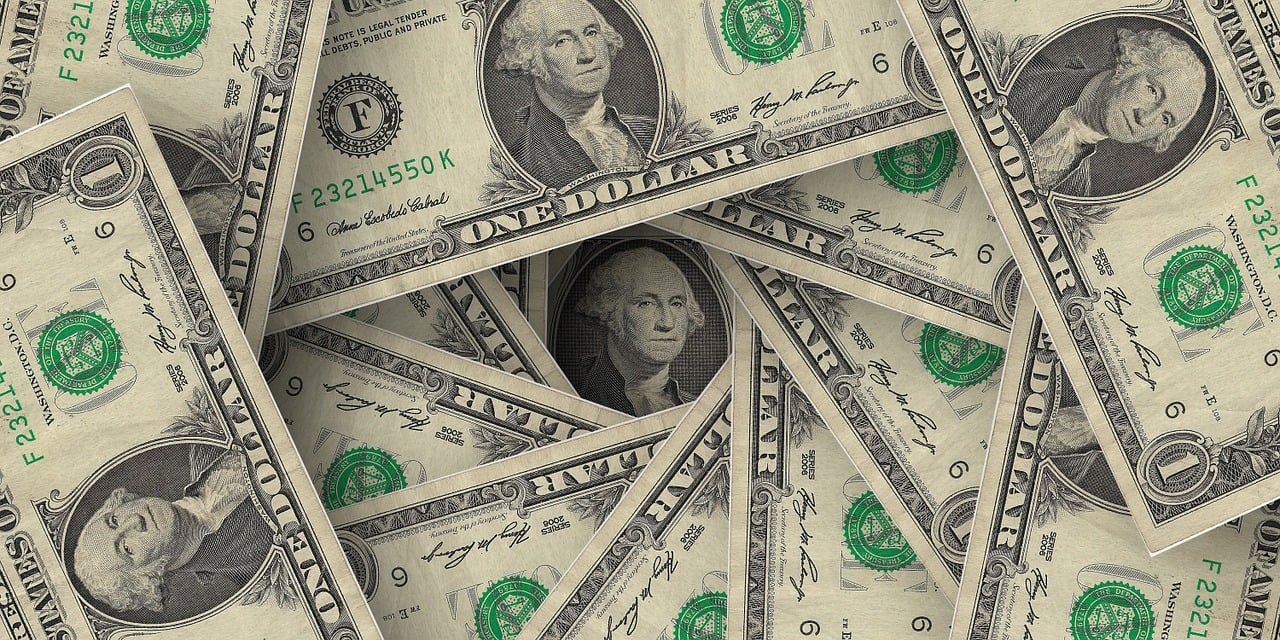Dollar Sinks as Fed Rate Cut Expectations Increase

The dollar index (DXY00) on Friday fell by -0.90%. The dollar retreated from a 1.5-week high on Friday and sank to a 3.5-week low on dovish comments from Fed Chair Powell, who said downside risks to employment are rising and the shifting balance of risks may warrant adjusting monetary policy. Falling T-note yields on Friday also weighed on the dollar after the 10-year T-note yield fell to a 1-week low of 4.24%. The dollar initially moved higher on Friday on hawkish comments from Boston Fed President Susan Collins, who said that modestly restrictive Fed policy is appropriate.
Fed Chair Powell said, “The stability of the unemployment rate and other labor market measures allows us to proceed carefully as we consider changes to our policy stance. Nonetheless, with policy in restrictive territory, the baseline outlook and the shifting balance of risks may warrant adjusting our policy stance.”
Boston Fed President Susan Collins said, US economic growth is slowing, but overall economic fundamentals are solid as she sees upside risks to inflation and downside risks to labor. She added that Fed policy is modestly restrictive, which is appropriate.
The dollar also came under pressure on Friday on concerns over Fed independence after President Trump said he would fire Fed Governor Lisa Cook if she didn’t resign amid allegations of mortgage fraud.
Federal funds futures prices are discounting the chances for a -25 bp rate cut at 85% at the September 16-17 FOMC meeting and at 52% for a second -25 bp rate cut at the following meeting on October 28-29.
EUR/USD (^EURUSD) on Friday rose by +0.97%. The euro recovered from a 2-week low on Friday and rallied sharply to a 3.5-week high as the dollar weakened on dovish comments from Fed Chair Powell. The euro initially moved lower on Friday on Eurozone growth concerns after German Q2 GDP was revised lower. Also, doubts about an imminent end to the Russian-Ukrainian war are negative for the euro.
German Q2 GDP was revised lower to -0.3% q/q and -0.2% y/y from the previously reported -0.1% q/q and unchanged y/y.
On the geopolitical front, US Vice President Vance said negotiations over ending Russia’s war in Ukraine are focused on security guarantees for Ukraine and territory Russia wants to control, including Ukrainian territory that it currently isn’t occupying, as the US tries to broker a peace deal between the two countries. The US is working to set up a meeting between President Putin and Zelensky, and if that meeting goes well, President Trump said he’ll look to follow up with a trilateral summit with the leaders. The outcome could have macroeconomic implications regarding tariffs and oil prices, and could, of course, have significant consequences for European security.
Swaps are pricing in a 2% chance of a -25 bp rate cut by the ECB at the September 11 policy meeting.
USD/JPY (^USDJPY) on Friday fell by -1.01%. The yen rebounded from a 3-week low against the dollar on Friday and rallied sharply to a 1-week high as T-note yields tumbled on dovish comments from Fed Chair Powell. The yen also found support from higher Japanese government bond yields after the 10-year JGB bond yield climbed to a 16-year high on Friday of 1.627%, which strengthened the yen’s interest rate differentials. The yen initially moved lower on Friday on moderation in Japanese consumer prices, which is dovish for BOJ policy after the July national CPI eased as expected.
Japan’s Jul national CPI eased to +3.1% y/y from +3.3% y/y in Jun, right on expectations. Jul national CPI ex-fresh food and energy was unchanged from Jun at +3.4% y/y, right on expectations.
December gold (GCZ25) on Friday closed up +36.90 (+1.09%), and September silver (SIU25) closed up +0.975 (+2.56%). Precious metal prices recovered from early losses on Friday and rallied sharply, with gold climbing to a 1-week high and silver climbing to a 1-month high. Precious metals rallied on Friday after the dollar sank to a 3.5-week low and T-note yields tumbled when Fed Chair Powell signaled a possible interest rate cut next month. Precious metals continue to see safe-haven demand driven by US political uncertainty and concerns over Fed independence, after President Trump on Friday said he will fire Fed Governor Lisa Cook if she doesn’t resign amid allegations of mortgage fraud. Gold continues to have safe-haven support related to US tariffs and geopolitical risks, including the conflicts in Ukraine and the Middle East.
Precious metals prices on Friday initially moved lower after the dollar index rose to a 1.5-week high. Silver prices were also under early pressure Friday after German Q2 GDP was revised lower, a negative factor for industrial metals demand.
Fund buying of precious metals continues to support prices after gold holdings in ETFs rose to a 2-year high last Friday, and silver holdings in ETFs reached a 3-year high on Tuesday.
On the date of publication, Rich Asplund did not have (either directly or indirectly) positions in any of the securities mentioned in this article. All information and data in this article is solely for informational purposes. For more information please view the Barchart Disclosure Policy here.